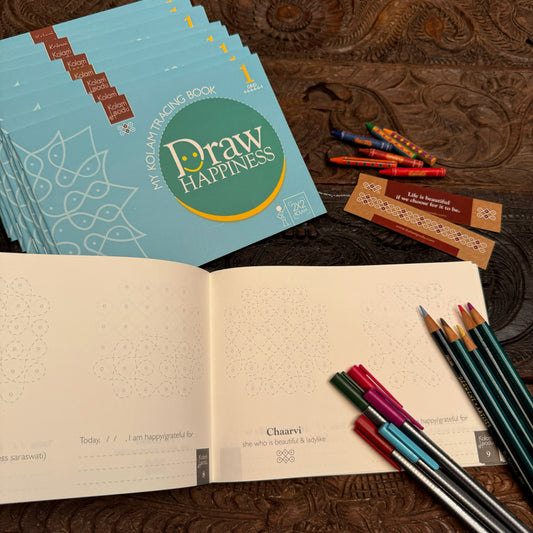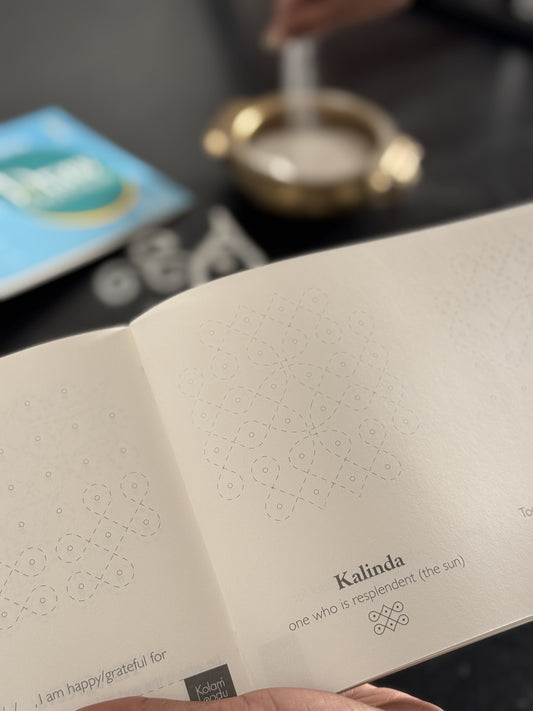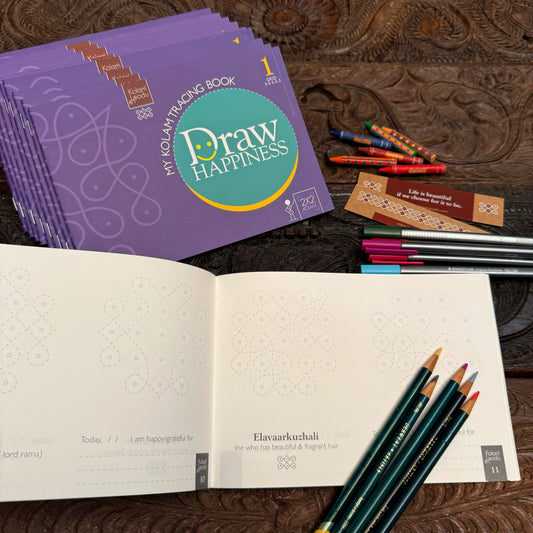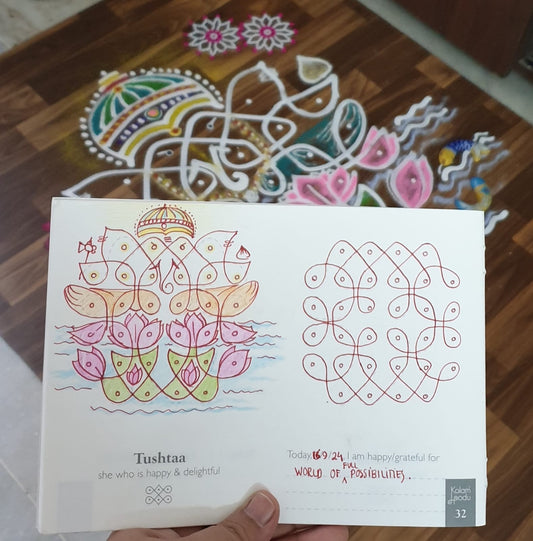Unlock improved coordination through the art of drawing kolams. This traditional practice from South India involves intricate patterns that demand precise hand movements and coordination. Discover how regular kolam drawing enhances hand-eye coordination, fine motor skills, spatial awareness, and more. It's not just an art form; it's a skill-building exercise for people of all ages
Coordination refers to the ability to use different parts of the body together smoothly and efficiently to perform tasks accurately. It involves the integration of muscles, nerves, and sensory feedback to execute precise movements. Drawing kolams can significantly improve coordination due to the following reasons:
- Hand-Eye Coordination: Drawing kolams requires artists to connect dots, create intricate lines, and form geometric shapes. To accomplish these tasks accurately, individuals must coordinate their hand movements with their visual perception. This process strengthens the connection between their eyes and hands, improving hand-eye coordination.
- Fine Motor Skills: Kolam designs often comprise detailed patterns and shapes, requiring intricate movements of the hands and fingers. As individuals draw these patterns repeatedly, they develop better finger dexterity and hand control. This enhanced fine motor skill development contributes to improved overall coordination.
- Spatial Awareness: Creating kolams involves understanding spatial relationships between dots, lines, curves, and shapes. Artists need to visualize how different elements of the kolam fit together on the drawing surface. This spatial awareness enhances their ability to plan and execute precise movements.
- Bilateral Coordination: Many kolam designs exhibit bilateral symmetry, where the elements on one side mirror those on the other. Drawing these symmetrical designs encourages the use of both hands simultaneously, fostering bilateral coordination and balance.
- Sequential Movements: Kolam artists follow specific steps and sequences to create the patterns. Executing these sequential movements repeatedly improves coordination, as individuals learn to transition smoothly from one step to the next.
- Patience and Precision: Drawing kolams is a patient and meticulous process that requires attention to detail. This mindful engagement promotes the development of precise movements and encourages individuals to execute their actions with greater accuracy.
- Iterative Practice: Kolam drawing involves iterative practice, where artists reproduce patterns repeatedly. This repetition reinforces muscle memory, making the movements more automatic and improving coordination over time.
- Focus and Concentration: The process of drawing kolams demands concentration and attention to detail. Focusing on the intricate patterns and shapes enhances individuals' ability to perform coordinated movements with precision.
Drawing kolams provides a multi-faceted approach to improving coordination. The repetitive and patient nature of kolam creation fosters the development of coordinated movements, benefiting individuals not only in their artistic pursuits but also in various other daily activities that require precise and well-coordinated actions. They are especially beneficial for children.
Kolam in Tamil Nadu is muggulu in Andhra Pradesh and Telangana, rangoli in Maharashtra, hase and rangavali in Karnataka, alopana in Bengal, to name a few.
Life is beautiful if we choose for it to be. Let’s draw happiness!







